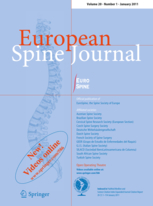
SPINE
DC electrical stimulation does not improve fusion mass bone quality
Euro Spine Journal; 2010; 19; 2200-220898 patients, aged 60 or above, with spinal stenosis to undergo posterolateral spinal fusion using fresh frozen allograft were randomized to receive no electrical stimulation or 40 or 100 microA DC stimulation for a period of at least 6 months. The results of the study indicate that at 1-year follow-up, DC electrical stimulation did not improve fusion mass bone quality. It was observed that smokers and women had lower fusion mass bone mineral density (BMD).
Unlock the full ACE Report
You have access to {0} free articles per month.Click below to unlock and view this {1}
Unlock NowCritical appraisals of the latest, high-impact randomized controlled trials and systematic reviews in orthopaedics
Access to OrthoEvidence podcast content, including collaborations with the Journal of Bone and Joint Surgery, interviews with internationally recognized surgeons, and roundtable discussions on orthopaedic news and topics
Subscription to The Pulse, a twice-weekly evidence-based newsletter designed to help you make better clinical decisions
Exclusive access to original content articles, including in-house systematic reviews, and articles on health research methods and hot orthopaedic topics
Or upgrade today and gain access to all OrthoEvidence content for just $1.99 per week.
Already have an account? Log in


Subscribe to "The Pulse"
Evidence-Based Orthopaedics direct to your inbox.
{0} of {1} free articles
Become an OrthoEvidence Premium Member. Expand your perspective with high-quality evidence.
Upgrade Now












































































